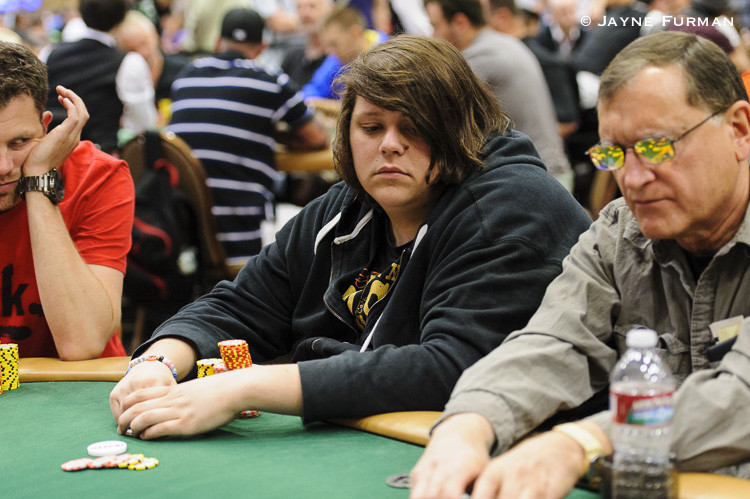When you've played poker for years, it's easy to forget that technical poker speak may as well be a different language. Many players just picked up a deck of cards for the first time and are wondering what the hell a reverse implied range merge against a large stack to pot ratio is.
Maybe you are new to poker as well and want to start analyzing the game at a deeper level, but the lingo and foreign concepts get in the way. To help, _Card Player_ brings you this brand new series, Explain Poker Like I'm Five.
What Does It Mean in Poker? A bluff -catcher is a hand that can beat the bluffs in your opponent's betting range, but none of the value hands. The terms bluff-catch and bluff-catching are used to describe the act of calling a bet with a bluff-catcher. Depending on the situation, any hand (even non-made hands) can fit this criterion. What matters then in the distribution of this bluff-catching range is the card removal effects of the two cards you hold. Because of this, sometimes a one-pair hand could actually be a better bluff. As a result, their bet may appear polarising (bluff or nuts) to a competent player, causing such regs to call with their 'bluff catcher' type hands. At showdown, however, they find out their opponent was just randomly betting a hand that was marginally better than theirs (in a spot most people would've checked a hand of that strength). Becoming a Bluff Catcher will instil fear into the hearts of your opponents. It's one thing to be able to spot a bluff, but what do you do once you realise you're being bluffed? We will give you the tools to not only spot the bluff but catch the culprit red-handed. The ‘Bluff Catcher Freeroll' tournament shall be conducted every Sunday at 20:00 IST from March 3, 2019-March 31, 2019. Users shall be credited with Bluff Catcher Freeroll Poker Tournament tickets equivalent to the freerolls still left to take place as follows: Players who vote by March 2 will receive five freeroll tickets.
Every issue, we'll take on a new term or idea, perhaps one you might come across elsewhere in this very magazine, and we'll break it down to its simplest components.
The Concept: Bluff Catcher
What Is It?

A hand with marginal strength that is not good enough to bet or raise with, but strong enough to go to showdown against an opponent's bluffs.
Okay, Now Explain It Like I'm Five
Bluff catchers are also known as value calls. When you make a medium-strength hand that cannot be bet for value, it is often the best play to turn your hand into a bluff catcher. You let your opponent bet and call, hoping your opponent was bluffing. The strength of a bluff catcher can vary depending on your opponent's betting range.
Give Me An Example (Or Two)
You are playing in a $2-$5 no-limit hold'em cash game and the cutoff raises to $20. You call from the big blind with K Q and the flop comes down A K 6. You check and your opponent makes a continuation bet of $30.
You call with second pair and the turn is the 5. You check again and your opponent checks behind. The river is the 5, and you miss your flush draw. This might be a good opportunity to turn your hand into a bluff catcher.
Bluff Catcher Poker Play
Your opponent checked behind on the turn, so it's possible that your pair of kings is the best hand, however, if you bet, he will likely fold all lower pairs and all of his missed draws. So instead, you check. Your opponent might bet a better hand, like a pair of aces. Or your opponent might check behind with their lower pairs and missed draws.
Or, your opponent might take your check as a sign of weakness and bluff. If your opponent does bluff, you can call with your bluff catcher and take down the pot.
Bluff Catcher Poker Box
When deciding whether or not to try a bluff catcher, you must consider your opponent. If your opponent is passive or tight, you should lean towards folding. If your opponent is especially aggressive or loose, then you should lean towards calling. The amount your opponent bets should also be considered when deciding to call with a bluff catcher. ♠

